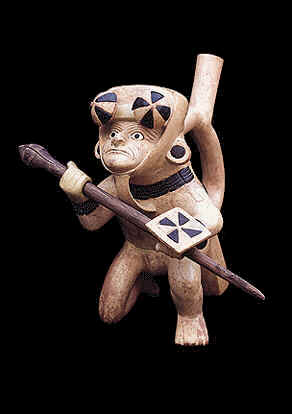
|
|
|
|
|
|
Some Historical Background IV
|
Most of what we know about the daily life of the Moche people, however, comes from their ceramics, renowned for their technical and pictorial virtuosity. Studies of Moche iconography have contributed substantially to our understanding, offering insight into Moche ideology and ritual. They have also revealed much about Moche social structure and even economic activities. Research by scholars such as Gerd Kutscher, Elizabeth Benson, Annemarie Hocquenghem, Christopher Donnan, Steve Bourget, and Luis Jaime Castillo, among others, offers a reading of Moche society based on the «narrative» scenes drawn on ceramics. These complement those depicted on multicolored murals as well as those portrayed in textiles and works in metal. Based on recent studies, scholars have established that these narrative scenes portray activities that actually took place and that the individuals shown in them also existed. The people depicted in the scenes formed Moche's ruling elite, who were given divine attributes. Examples include the discoveries at the tombs of Sipán in the Lambayeque valley, San José de Moro in Jequetepeque, Huaca La Cruz in Virú, and the recently excavated tombs at the Huaca de la Luna in the Moche valley. Since 1991 excavations by the National University of La Libertad-Trujillo have focused on one of the most important and complex Moche sites: the Huacas del Sol y de la Luna. The University team is interested in defining the architecture of the larger buildings, their construction histories and their functions, as well as the study of the urban center that surrounded the Huacas. At the same time, discoveries made by archaeologists are being conserved and efforts are continually underway to display these remains of Peru's ancient history to visitors in the most informative way possible. |
 |
S P O N S O R S
S P O N S O R S